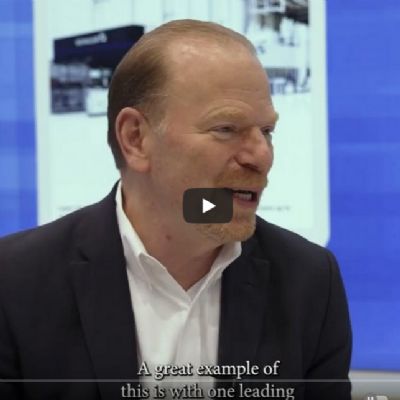 Brad Kuvin
Brad KuvinA High Say:Do Ratio—Internally and Externally
April 26, 2023Comments
I recently interviewed Kapco Metal Stamping group president Hani Malek for our monthly Business Edge enewsletter, to discuss his approach to managing the firm’s large and diverse manufacturing operations, and its 700 employees. There’s a lot to chew on in the interview as Malek weighs in on his overriding mission—to embed trust and accountability into the company culture.
Malek and I also discussed a host of other topics, including the company’s inhouse, homegrown workforce-development initiative: the Kacmarcik Center for Human Performance, launched recently “to help people become the best version of themselves,” Malek says.
Here, I’ll focus on one particularly enlightening takeaway from my conversation with Malek, that is: As he continues to build and develop his management team, he seeks in his managers “receptiveness to learn and embrace new ideas, and they must have a high Say:Do ratio,” Malek stresses. Intrigued, I researched this concept and came away with a definition of Say:Do from author and leadership guru Jes Averhart, who writes:
“It’s simple. Do you do what you say you’re going to do? The Say:Do Ratio serves as a guide to an honest answer. We allude to it all the time in expressions like, ‘Talk is cheap,’ ‘I’ll believe it when I see it,’ or ‘all talk, no action.’ A high ratio sets the conditions for increased credibility and authenticity, which facilitates efficient collaboration. On the flip side, if your Say:Do ratio decreases, you lose credibility and even attract suspicion.”
The Say:Do ratio also applies to how metal formers serve their customers, who increasingly rely on suppliers for more than just timely delivery of quality parts and assemblies. In addition, your customers desire—and deserve—trustworthiness and reliability. They must have the peace of mind that comes from knowing you’ll keep your promises and meet your commitments. Accomplish that, as a leader, and drive that culture down throughout the entire company, and customer loyalty will become a given, not a concern.
Another business-leadership guru and author, Lee Colan of the L Group, writes:
“A business that delivers reliable results is a sum of reliable teams, and reliable teams are the sum of reliable individuals. So, building reliable business results really starts with a leader coaching each team member to deliver reliable individual results.”









 Video
Video